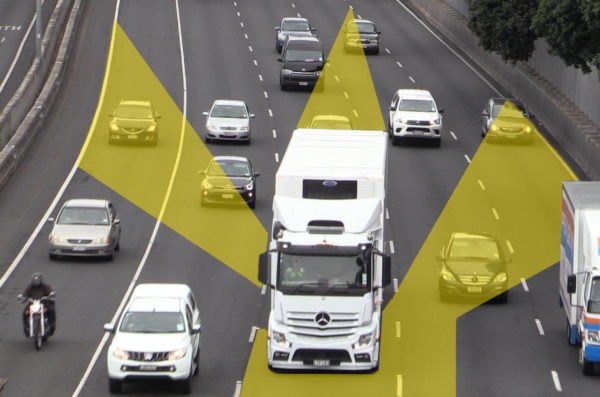Do you have to check your blind spots while driving?
A blind spot is anywhere you can’t see in your mirrors; you would have to turn your head to see into it. Some drivers will maintain that if you check your mirrors regularly and have good awareness of what’s happening up ahead that there’s no need to check over your shoulder when changing lanes. Additionally, there are systems such as blind spot monitoring which monitor whether someone is in your blind spot and either show or sound a warning if you begin to indicate in that direction.
So, is checking over your shoulder something we don’t need to do any more?
You still must check over your shoulder and it’s for three reasons:
- Cyclists and motorcyclists are small, can move quickly, tend to filter through traffic (i.e. ride between slower vehicles) and are far less visible in your mirrors than a large vehicle like a truck. Blind spot sensors might not pick them up, or might not pick them up in time if they are travelling faster than you
- You can’t hear cyclists in the lane next to you. You might hear a motorbike or scooter, but cyclists are silent.
- The vehicle moving into your blind spot might be moving from a different lane. For example, if you have just entered a motorway into lane 1 from a slip road and want to move to the middle lane (lane 2), a vehicle might also be moving from lane 3 back into lane 2 at the same time. This scenario happens frequently.
For motorcyclists who have limited peripheral vision due to the helmet, and who are more vulnerable as road users, the ‘head check’ or ‘lifesaver check’ is very important as motorbike mirrors tend to be small and their view depends more on the angle of the bike and the position of the rider.
For lorry drivers who have blind spots which are very difficult to overcome, extra care needs to be taken when changing lanes.

When would you check your blind spot while driving?
You should check your blind spot:
- Any time where you are changing lanes (including entering and exiting a motorway)
- Any time where two lanes merge into one
- When you are about to do a u-turn
- When you are turning right or left and leaving the road, e.g. turning into a driveway or a side road
- When you are about to overtake another vehicle
How can you reduce your blind spots?
- Setting your mirrors correctly is the easiest way. You should barely (if at all) be able to see your vehicle in your wing mirrors without turning your head slightly. Your rear-view mirror should frame the rear window.
- You can purchase convex mirror attachments that help cover the blind spots.
- Blind spot monitoring systems are available in many new vehicles (even HGVs) – they will display a light and/or play a sound.
- Lorry drivers and light vehicle drivers that tow caravans can add extra mirrors to cover those areas which are difficult to see.
- Cameras can help with your blind spots when manoeuvring.
- Understanding the National Standards for Riding Mopeds and Motorcycles
- Livestock Transport Rules UK: A Complete Guide to Animal Transportation Requirements
- The Role of Safety Advisers in Dangerous Goods Transport
- Sustainable Driving: Reducing Your Environmental Impact on the Road
- Developing Effective Lesson Plans for Driver Training
- UK Agricultural Vehicle Registration and Tax Relief
- Challenges of Transporting Radioactive Materials (Class 7)
- Exemptions and support for Clean Air Zone charges
- Navigating Legal Requirements: The UK Motorcycle Licensing Rules
- Safe Transportation of Agricultural Chemicals and Hazardous Materials
- Innovations in Vehicle Construction for ADR Compliance
- Motorcycle Recovery Operations: How to Recovery a Broken Down Motorbike
- Alternative Fuels in Agricultural Vehicles
- Carriage of Dangerous Solids in Bulk Containers
- Understanding Limited Quantity Exemptions in ADR